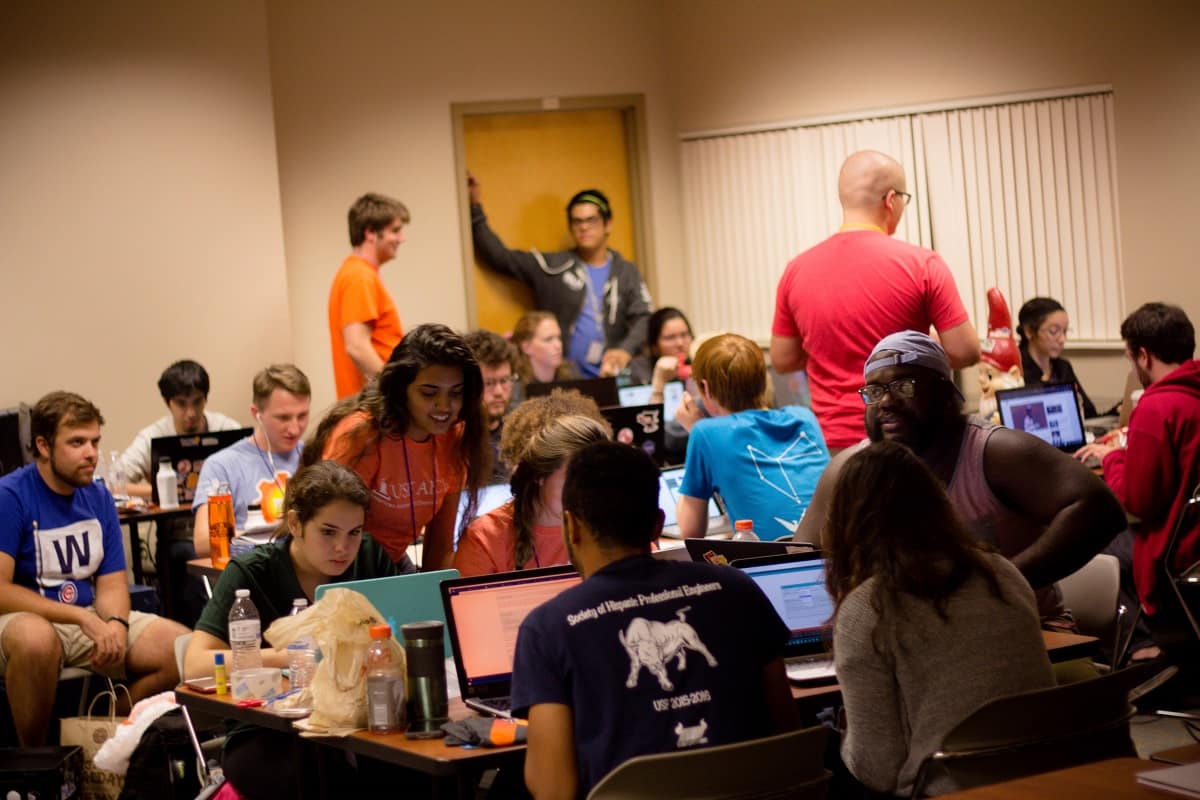‘Hackers’ Showcase Innovation at Embry-Riddle

An app that curates art, an interactive puzzle game that allows multiple users to solve in real time and software that prevents toast from burning are just a few of the projects that students created during HackRiddle, a hackathon Oct. 15-16 at Embry-Riddle’s Daytona Beach Campus.
During the 24-hour event, more than 250 students, industry leaders, judges and mentors came together to encourage computer programmers and software engineers to create projects that showcase ingenuity. The event drew dozens of college students from across the state and country.
Winners included:
1st place: Robart, an art analysis tool that generates curator descriptions based off of features of the design it sees.
2nd place: Public Puzzle, an interactive game that uses video feed from computer cameras to create a puzzle that multiple users can solve together in real time through a mobile device or pc.
3rd place: Toastifai, software that images toast while it is in the toaster to create the perfect toast each time and prevent burning.
Riddle’s Choice: Wrist Watch, an app that uses accelerometer technology to alert emergency services in the event that the person is in danger.
Organizer Jeremiah Lantzer, a Software Engineering student, said the event was much bigger this semester thanks to the support of industry partners such as Rockwell Collins, Major League Hacking and Amazon Web Services.
“I was thrilled at what I saw come out of HackRiddle,” Lantzer said. “There were projects that ranged from a smart toaster that used image detection to tell the user when their toast is perfectly toasted and an app that used basic artificial intelligence to tell a user how they may feel about certain pieces of art. The people that participated in HackRiddle used resourcefulness and analytical thinking that completely shocked me with what they created.”
Embry-Riddle faculty and staff with expertise in technology and software served as judges for the competition. The projects were judged on technical difficulty, originality, user experience, design and usefulness.
Becky Vasquez, Vice President and Chief Information Officer at ERAU, said she was impressed with how students were able to take projects from concept into a working model in just 24 hours.
“Hackathons and similar platforms also provide an amazing opportunity to collaborate with people you might not have met otherwise, including students from other institutions,” Vasquez said. “Hackathons can support someone’s good idea into becoming a reality and that’s very appealing to me. Sometimes, it’s one moment that changes an individual or many individuals in a positive way for years to come.”
Embry-Riddle Engineering Professor Dave Spitzer said his favorite project was Toastifai.
“These students toasted a bunch of bread to different degrees, conducted market research among the hackers to be sure of what is ‘perfect toast,’ and then hacked a video camera on their toaster that could see inside and pop the toast at exactly the right time, every time,” Spitzer said.
Lantzer said that HackRiddle will likely become an annual event led by Embry-Riddle students. By creating an outlet for programmers to express their creative and analytical side, he hopes to continue the tradition of innovation at Embry-Riddle.
“We want Embry-Riddle to be on the map for things like computer science and technology,” he said. “By bringing in almost 200 students every year to participate in a hackathon we can really start to show people that Embry-Riddle has an abundance of opportunities beyond aviation.”
